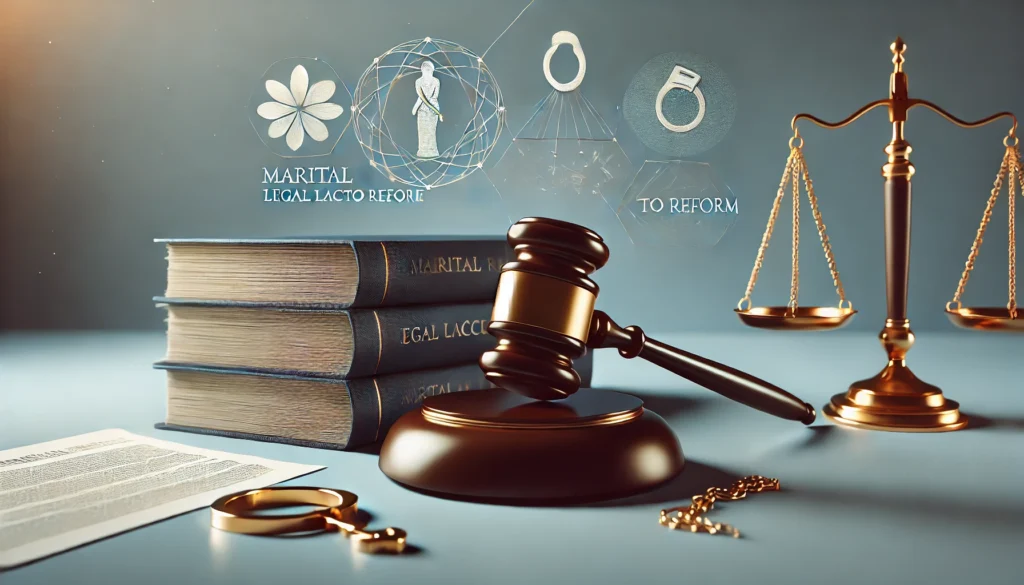Published on 27th June 2025
Authored By: S. Lavanya
Sathyabama Institute of Science and Technology
ABSTRACT:
The case of Tukaram V. State of Maharashtra (1979), widely known as the Mathura Rape Case, is one of the most controversial and consequential decisions in Indian criminal law. It involved the alleged custodial rape of a 16-year-old tribal girl, Mathura, by two policemen inside the premises of a police station. Despite the significant power imbalance and clear indicators of coercion, the Supreme Court acquitted the accused, concluding that Mathura had consented to the sexual intercourse. The judgment was based on flawed reasoning that emphasized the absence of physical resistance and the victim’s alleged past sexual history, thereby overlooking the broader context of custodial coercion. The decision triggered an unprecedented wave of public criticism, particularly from feminist legal scholars and human rights activists. It brought to the forefront the need to reformulate legal understandings of consent, especially in cases where institutional power and authority are misused. The public outcry led to a series of legal reforms through the Criminal Law (Amendment) Act, 1983, which introduced new provisions on custodial rape, shifted the burden of proof in certain cases, and strengthened the legal position of rape survivors. This abstract highlights the case’s significance in transforming India’s criminal justice system. The Mathura case did not merely question the application of law but exposed deep-rooted societal biases and patriarchal norms entrenched in judicial interpretations. It serves as a landmark in feminist legal advocacy, underscoring the importance of victim-centered justice and legal reforms grounded in equality and human dignity. The case is now a critical part of legal education and discourse, symbolizing the power of civil society in demanding accountability and justice within a democratic framework.
CASE DETAILS:
- Case Title: Tukaram V. State of Maharashtra
- Citation: AIR 1979 SC 185
- Bench: Justice Y.V. Chandrachud, Justice A.D. Koshal, Justice P.S. Kailasam
- Date of Judgment: September 15, 1978
- Court: Supreme Court of India
- Applicable Law: Section 375 and 376 of the Indian Penal Code, 1860
- Appellants: Tukaram and Ganpat (policemen)
- Respondent: State of Maharashtra
INTRODUCTION:
The landmark case of Tukaram and Anr. V. State of Maharashtra (1979), commonly referred to as the Mathura Rape Case, is one of the most significant legal turning points in the history of Indian criminal jurisprudence. At the heart of the case was a young tribal girl named Mathura, who was allegedly raped by two policemen inside a police station—an institution meant to uphold justice and protect citizens. The case brought to light not just the vulnerability of women, particularly from marginalized communities, but also the systemic flaws in how Indian courts understood and adjudicated sexual violence. When the Supreme Court acquitted the accused, reasoning that the victim had given “consent” due to lack of resistance and absence of injuries, it triggered widespread national outrage. It led to a powerful feminist movement, academic discourse, and, most importantly, legal reform through the Criminal Law (Amendment) Act, 1983, which redefined custodial rape and shifted burdens of proof.
FACTS OF THE CASE:
The case of Tukaram v. State of Maharashtra (1979), infamously known as the Mathura rape case, revolves around the alleged rape of a young tribal girl named Mathura inside a police station.
Mathura, a 14-16 year old orphan, lived with her brother. Her brother filed a complaint at the Desai Gunj police station alleging that Nunshi, her husband, and Ashok had kidnapped Mathura. At the police station on March 26, 1972, Head Constable Baburao took down the report. Later that night, two constables, Ganpat and Tukaram, allegedly raped Mathura in the police station premises.
Medical examination about 20 hours later found no external injuries on Mathura’s body and no semen in her vaginal swabs or pubic hair. However, semen was found on her clothes and on Ganpat’s pyjamas. The Sessions Court acquitted the accused, questioning Mathura’s age and character, and suggesting the act was consensual due to the lack of injury.
The Bombay High Court overturned this acquittal, recognizing the difference between consent and passive submission, especially considering Mathura’s vulnerable situation. However, in a controversial judgment in 1979, the Supreme Court reversed the High Court’s decision and acquitted the accused. The Supreme Court cited the absence of injuries, Mathura’s failure to raise an alarm, and the lack of conclusive proof of her age as reasons for their verdict, implying the act might have been consensual.
This judgment sparked widespread outrage and protests by women’s rights activists and legal scholars, who criticized the court’s insensitivity and its interpretation of consent and evidence in cases of sexual assault, particularly within custodial settings.
ISSUES RAISED:
- Whether the sexual intercourse between the police officers and Mathura was consensual or coerced?
- Whether the absence of physical injuries on the victim’s body is sufficient to infer consent in a custodial setting?
- Whether the character and past sexual history of the victim are relevant in determining the occurrence of rape?
- Whether the age of the victim, estimated to be between 14 and 16 years, constituted statutory rape under Indian law at the time?
- Whether the custodial setting and the role of the accused as police officers imposed a higher duty of care and accountability?
- Whether the burden of proof should remain entirely on the prosecution in cases of custodial rape?
PETITIONER’S ARGUMENTS:
- Lack of Evidence of Force or Lack of Consent: The defense argued that the medical examination revealed no signs of physical injury on the victim’s body, suggesting no struggle or resistance. They contended that the absence of such evidence implied consensual sexual intercourse, not rape.
- No Proof of Minority: The defense questioned the victim’s age, arguing that there was no conclusive proof that she was below the age of 16 at the time of the incident. Under the law at the time, consent was irrelevant if the victim was below 16 years of age.
- Unreliable Testimony: The petitioner’s counsel argued that the victim’s testimony was inconsistent and unreliable, containing falsehoods and improbabilities. They likely pointed to any contradictions or ambiguities in her statements to undermine her credibility.
- Passive Submission vs. Consent: The defense attempted to portray the victim’s lack of outward resistance as consent, arguing that her submission was not necessarily indicative of a lack of willingness. They suggested that the circumstances did not necessarily point to fear or compulsion that would negate consent.
- No Alarm Raised: A significant point was made that the victim did not raise an alarm or cry for help during the alleged incident, which the defense used to argue against the claim of rape.
RESPONDENT’S ARGUMENTS:
- Challenging the Notion of Consent: The prosecution likely argued that the circumstances surrounding the incident at the police station negated any possibility of genuine consent. They emphasized the power imbalance between the victim, a young tribal woman summoned to the police station late at night, and the two policemen in authority. They likely argued that any submission from the victim was due to fear and coercion arising from this power dynamic, labeling it as “passive submission” rather than willing consent.
- Rebutting the “No Injury” Argument: The State likely countered the defense’s argument about the lack of physical injuries by asserting that the absence of visible marks did not automatically imply consent. They might have argued that the victim’s fear and helplessness in a police station environment could have prevented her from physically resisting, even if the act was against her will. They may have also pointed to the possibility of internal injuries not immediately apparent.
- Highlighting the Victim’s Testimony: The prosecution would have stressed the credibility of the victim’s account of the events, urging the court to consider the totality of her testimony and the surrounding circumstances. They would have attempted to explain any inconsistencies pointed out by the defense, arguing that they were minor or due to trauma, and that the core of her accusation remained consistent.
- Emphasizing the Location and Time: The fact that the alleged rape occurred inside a police station at night, where the victim was alone with the accused, was a crucial point for the prosecution. They likely argued that this setting inherently suggested coercion and made the possibility of consensual sex highly improbable.
JUDGMENT:
In the Mathura Rape Case, the Supreme Court acquitted two policemen accused of raping a minor tribal girl, Mathura, inside a police station. The Court ruled that her testimony lacked reliability, noting no physical injuries or signs of struggle. It held that prior sexual experience and the absence of resistance indicated possible consent, thus not meeting the legal definition of rape at the time. The verdict was heavily criticized for ignoring custodial power dynamics and led to nationwide protests. As a result, the Criminal Law (Amendment) Act, 1983 was enacted to reform rape laws, especially concerning custodial rape and the definition of consent.
ANALYSIS AND CRITICISM:
- Misinterpretation of Consent:
- The Court failed to consider the power dynamics between a tribal minor girl and state officials. Consent under pressure or fear is not legally valid.
- The notion that lack of physical resistance equals consent reflects a limited and patriarchal view of sexual violence.
- Reliance on Sexual History:
- The Court’s focus on Mathura’s “sexual habituation” was ethically and legally problematic.
- Past sexual experience is not consent for future acts, especially under coercion.
- Insensitivity to Victim’s Rights:
- The Court did not account for the custodial setting, which inherently invalidates voluntary consent.
- It sent a chilling message that victims needed to show injuries to prove rape.
AFTERMATH AND PUBLIC REACTION:
- The verdict sparked nationwide protests, particularly from women’s groups, lawyers, and academics.
- Four law professors—Upendra Baxi, Lotika Sarkar, Raghunath Kelkar, and Vasudha Dhagamwar—wrote an open letter to the Supreme Court, criticizing the judgment.
- Women’s organizations such as Forum Against Rape (later renamed Forum Against Oppression of Women) mobilized mass movements.
- The outrage became the catalyst for major criminal law reforms in 1983.
LEGAL REFORMS AS A RESULT:
Criminal Law (Amendment) Act, 1983:
- Amendments to Section 375 IPC:
- Expanded definition of rape to include custodial rape, gang rape, and rape by persons in positions of authority.
- Introduced new provisions (Sections 376A to 376D) to address aggravated forms of rape.
- Reversal of Burden of Proof:
- In cases of custodial rape, the burden of proving consent shifted to the accused, not the victim.
- Mandated that in certain rape cases, if the victim says there was no consent, the court shall presume it to be so.
- Enhanced Punishments:
- Provided stricter penalties for police officers, public servants, and those in custodial positions who committed rape.
CONCLUSION:
The Mathura Rape Case remains a landmark in Indian criminal jurisprudence—not for the judgment itself, but for the transformative changes it catalyzed. The Supreme Court’s decision exposed the systemic patriarchy and insensitivity in judicial reasoning. However, the public outrage it provoked also showed how civil society can influence legal reform. The amendments of 1983 were a direct consequence of this case and marked a shift towards victim-centered justice and gender-sensitive interpretations of law. This case serves as a reminder of the importance of context, power imbalance, and the correct interpretation of consent in rape cases. It also highlights the evolving nature of Indian law and the power of public discourse in shaping justice.
REFERENCES:
1.Tukaram v. State of Maharashtra, AIR 1979 SC 185
2.Indian Penal Code, 1860 – Sections 375 & 376
3.Criminal Law (Amendment) Act, 1983
4.Indian Evidence Act, 1872
5.Nivedita Menon, Seeing Like a Feminist, Zubaan, 2012
6.Flavia Agnes, Law and Gender Inequality: The Politics of Women’s Rights in India, Oxford.
7.Forum Against Rape archives and feminist responses from 1979–1983
8.Supreme Court Observer – Case Analysis and Law Review Articles.


